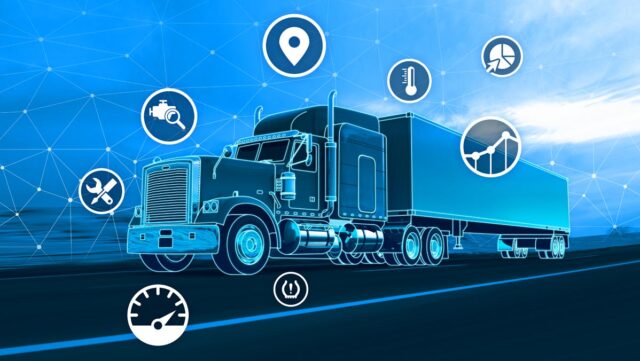By Tim Lapham, Insight Telematics
Fleet Managers, Finance and Operations teams are required to ensure they remain compliant with Chain of Responsibility, National and Jurisdictional OHS regulations. This, combined with risk and cost reduction initiatives, has lead to many organisations investing in a tracking / telematics platform.
A telematics platform, alone, rarely meets all of these needs unless you supplement your investment with a ‘Best of Breed’ technology mix (e.g. GPS + Cameras) and robust safety processes and procedures.
A 2023 study involving fleets of 50 or more vehicles (total 1.5m vehicles), found that those companies that had a telematics platform but did not have a safety strategy, had a 33% higher rate of accidents compared to those who did, further underlining the need for a comprehensive strategy for both systems and processes to deliver risk and cost reductions.

Your Technology Strategy
A very important step in choosing your telematics platform is clearly defining what data you need. This will determine what and how you deploy technology within your fleet, and importantly understand the costs to deploy and support it.
There are two main options:
- Hardwired – Location data, some hardwired sensors
- On Board Diagnostics (OBD II) connected devices – Location and Engine Data
If you’re looking for more than just location data, it’s imperative your solution can connect to your vehicles’ engine management system (OBD). Note that not all OBD devices will provide engine data, so check with your supplier first to make sure this is possible.
When choosing an option, think about the total cost of the solution across the life of the technology. The life of your telematics devices in most cases, will be longer than the life of the vehicle in your fleet. Therefore, you need to include the cost of removing and re-installing it in new vehicles. OBD connected devices are far easier to install and can be self-installed. Hardwired solutions require specialised skills which will involve considerably more time and cost.
If you use an installer, expect that your installation costs will be close to the cost of your hardware, so moving your devices to new vehicles will considerably change your return on investment (ROI) assumptions.
Data Access
An OBD install also provides you with access to data from the vehicle, and you should ensure that your telematics provider can demonstrate their ability to deliver this for the vehicles in your fleet. This can be easily done by requesting sample data output for your vehicle(s).
As a minimum, this should include:
- VIN
- Odometer
- Fuel Usage
- Engine Measurements (temperatures, pressures etc.)
- Engine Faults
- Electrical System Measurements
- Seat Belt Compliance
Consider how you are getting this information today, what it is costing you and the accuracy of the data. With an OBD connected solution, capturing data as it happens (such as engine/dash warnings) with accurate descriptions for your maintenance teams will considerably impact your fleet availability and allow you to catch issues before they take your vehicles off the road.
Lastly, you’ll need to consider how you interact with the data. Most organisations have their own reporting tools such as PowerBI, TechOne, Civica or Tableau. All telematics platforms provide you with reporting and some basic data analytics. Look for reporting options that allow you to export directly into your existing reporting tools and also incorporate AI to generate insights into the data. This will reduce your costs in generating reports whilst also improving the accuracy and timeliness of the data.
Artificial Intelligence (AI) as a Cost Saving Tool
Accidents, fuel usage monitoring and preventive maintenance scheduling are all resource intensive activities that require a lot of data analysis and reporting. Traditionally, telematics platforms have provided Fleet Managers with a binary way of determining what the data is telling you, which is resource intensive and requires a lot of time to piece together all of the data to generate actionable insights.
For example, accident notifications are determined by a simple analysis of the amount of feedback on the accelerometer on your telematics device. It’s a G-Force setting that measures the severity of an impact. Once the threshold is met, a collision event is generated and a message sent. This then kicks off a process of calling the driver, establishing what happened and incident reporting. This is a timely process and can require considerable effort in reporting and managing through your safety processes. Often these events are not collisions and can be attributed to the vehicle hitting a pothole.
AI is proving to be a valuable tool to reduce the amount of false reporting of accidents. With AI, data from a range of inputs can be collated and used to determine if there was an accident. Inputs such as is the vehicle continuing in the same direction, at a constant speed or what driver inputs have been detected should be considered to ensure that accident notifications are accurately reported.
AI is also providing fleet managers with data to ensure availability of your fleet. AI provides analysis of the engine data from your vehicles and can identify issues before they take your vehicle off the road. With an OBD connected device, engine data is streamed to your telematics platform in near real time so AI can look for trends that may lead to a serious issue.

Geotab Ace was announced February this year, and provides a full suite of AI features across the MyGeotab telematics platform.
The MyGeotab platform supports over 4.2 million connected vehicles today, is the largest global and most commonly used telematics platform in Australia. With OBD connected devices and the recent addition of new AI tools, we can provide you with a cost effective, reliable telematics platform.

For more information, reach out to the team at Insight Telematics on 1300553625 or info@insighttelematics.com.au














